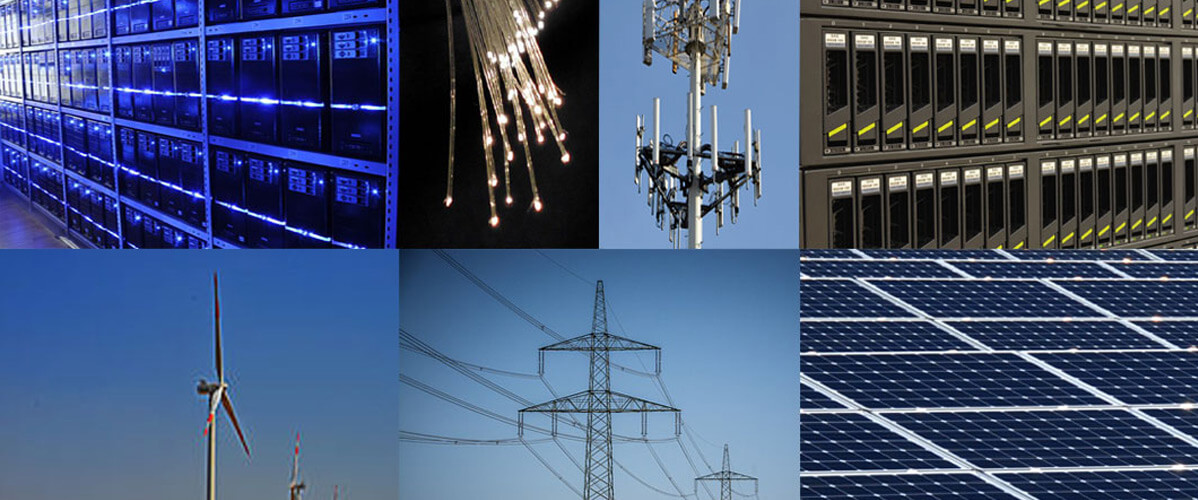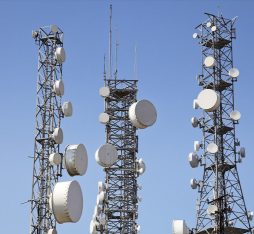For a telco veteran, the quandaries of electricity operators confronting the SmartGrids revolution might call forth an uncanny feeling of déjà vu, as if time-traveling 20 years backward. Electricity grids are facing up a technological paradigm shift on a par with what telecom networks underwent in the 1990s and 2000s. Both were system-wide disruptions [1] , destined to overturn the technical and economical models upon which rested the central position of incumbent actors. Faced with these challenges, these incumbents would in turn :(1) stand in denial, (2) resist and oppose change by whatever means available, (3) accept the new trend grudgingly and grumpily, (4) endorse it glowingly . Management textbooks overflow with examples [2] of such scenarios, drawn from all economic sectors.
The parallels we wish to draw here go well beyond a shallow historical simile : the revolutions which have, 20 years apart, shaken up these 2 worlds of networks are interrelated at many different levels and in many different ways that we try to uncover here.
Conjoining energy & information
Stating that SmartGrids and Internet revolutions are linked could appear tautological : the very definition of SmartGrids rests on their coupling to telecom networks, and on the generalized use of ICT in electricity networks.
This could be viewed in a non-disruptive way as the mere overlay of a thin veneer of communication on legacy grids. Yet SmartGrids are not about adding ICT to energy as an icing on a cake. They will be much more than a greenwashed, dressed up version of Edison-era electricity networks. The transformative potential of SmartGrids lies way beyond incipient precursory evolutions such as smart meters that have already been endorsed by incumbent operators: it will emerge through the multi-scale, pervasive association between ICT and electricity networks encompassing generation, storage and loads. The information that will become tightly coupled with the electrical grid will percolate through it so deeply as to effect a radical transformation of its own architecture.
This transformation has three complementary facets :
1. migration of control towards the periphery of the grid, leading ultimately to its decentralization into multi-scale semi-autonomous units, working together as a bottom-up system of systems rather than a top-down controlled system
2. ICT-enhanced abstraction of connectivity and interoperability models for grid-connected equipment.
3. transition from globally synchronous to asynchronous operation, across all relevant layers and scales.
For electrical grids, these evolutions are made possible and ultimately unavoidable by the pervasive coupling of information and energy, but they are precisely the same evolutions which, operating in th ICT domain alone, were the conceptual foundations by which the displacement of centralized telecom networks by internet-derived networks can be understood.
The 20 years lag between the 2 revolutions was inevitable, because the SmartGrids revolution could not have taken place in the era of centralized telecom networks. The Internet revolution had to take place first and disrupt in turn all other economic sectors before it could finally disrupt the heaviest of them all, the energy sector…
Along these lines, the same foundational principles that have made it possible to scale up the Internet by several orders of magnitude, sustaining its recognized robustness and efficiency, can be brought to bear and revisited in order to define a consistent basis for the Future Internet which SmartGrids will rely upon.
We describe the 3 main facets of these parallel revolutions in 3 separate sections that can be accessed from the links in the 3 following headings :
- Why SmartGrids will not be “Intelligent Networks”!
- Interoperability and connectivity, when the grid is a inspiration for information technologies
- Forsaking the clock
From parallels to differences
The numerous intriguing similarities between these evolutions that we have uncovered and described in this chapter provide reason enough for electrical and telecommunication engineers to pool their skills in order to build future SmartGrids on the basis of acquired knowledge.As seductive as this parallel may be, the differences are no less enlightening. The evolution of telecommunications towards the internet was essentially endogenous to the “technium” , the technological system itself, adaptive pressure coming only from regular economic constraints, where the most efficient and effective solution could not but ultimately win the evolutionary competition. By contrast, the electrical grid must also and perhaps above all adapt to the double constraint of the energy transition and climate change, whilst no such strong exogenous constraint existed to impel the adoption of internet-based networks [15] .
A well known difficulty does, however, qualify these nominally stronger constraints: the costs of climate change and fossil energy substitution are still, for the time being, negative externalities that are not spontaneously internalized by market mechanisms, absent regulatory intervention. The challenge arising from these combined issues places a heavy burden on all players in this field.
The transition from circuit-switched telecommunication networks to the internet took place incrementally over a more than a decade, and it is this gradualism which made it economically viable and ultimately acceptable to the incumbent players. Also, when the Internet revolution exploded, the development of packet switching networks based on the IP protocol had already been occurring since the 1970s. Even if these were used in a community that had no technical intersection (and even less of a cultural affinity) with the telco world, they were already much more than an lab experiment, whereas decoupled microgrids or plug an play distributed generation are nowhere near that scale.
A progressive transition along the lines of evolution described here is certainly more complex to implement for electrical grids, but it will certainly start from the levels at which autonomous control is more natural (home, building, district) generalizing according to the spread of distributed generation. Countries which already have a relatively high percentage of distributed renewable energy resources with a strong degree of intermittence will not have a choice and will probably be ready to take more risks to experiment with the new decentralized grid architecture models, as is already the case in Denmark where a cell-based grid architecture has been proposed.
Conclusion
The electrical grid, this crowning glory of the industrial age, is now (over)due to enter the information age. Along these (dual) lines, energy becomes pervasively coupled with associated data that is duly filtered, aggregated, and consolidated, so as to deserve being called “informed energy”, a new concept that we could venture to name “inergy”. Just as exergy measures the thermodynamic quality of energy [16], a metric of inergy that remains to be defined should take into account this added value of information in order to qualify and quantify the new “content” conveyed by the SmartGrids, which will no longer be just electricity, neither just a flow, but a close coupling, at all scales and levels, of energy and information.
Further Reading:
Carr N. The big switch, Rewiring the world, from Edison to Google, W.W. Norton & Company, 2009
Kelly K. What Technology Wants, Viking, 2010











